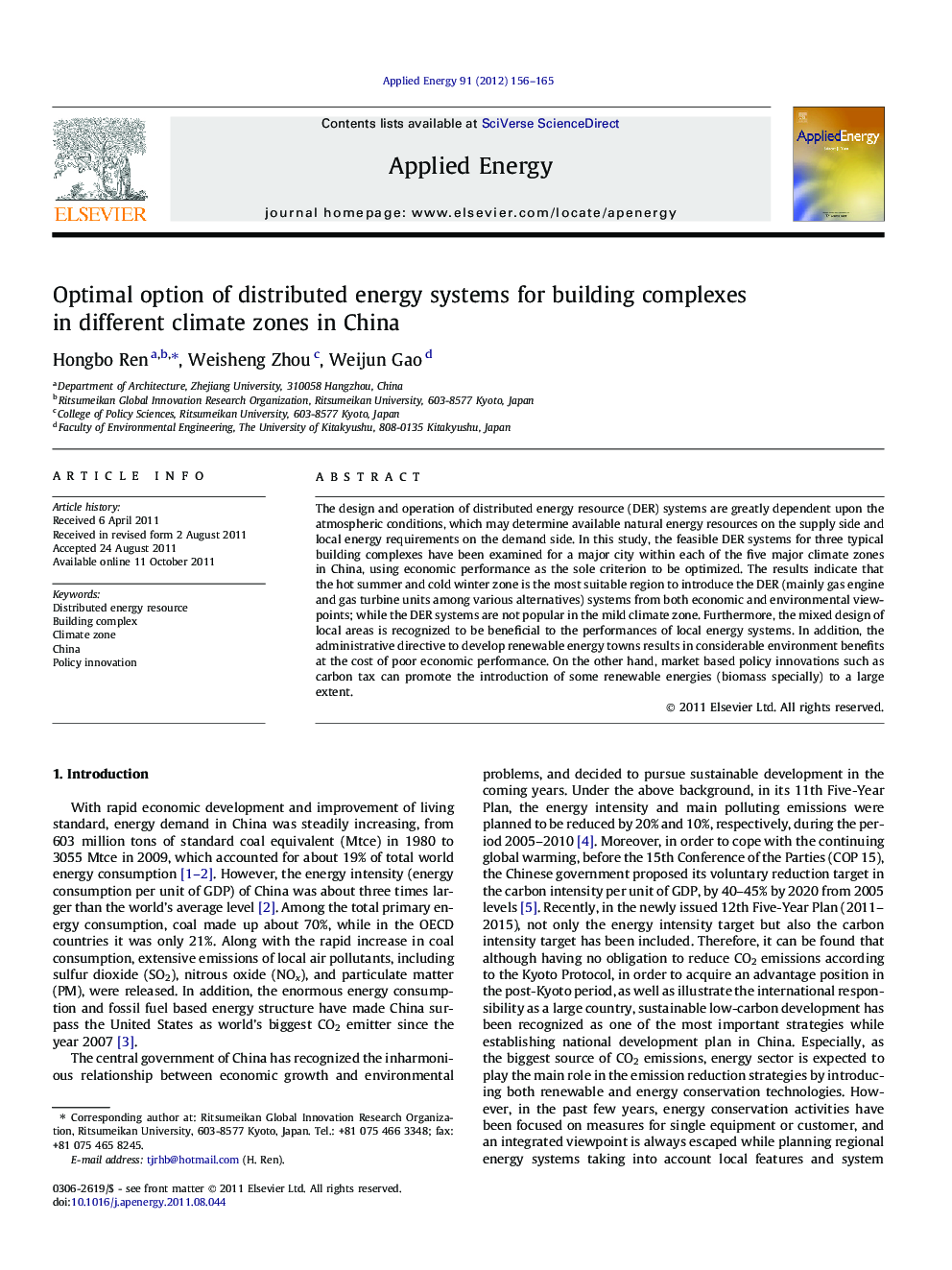| Article ID | Journal | Published Year | Pages | File Type |
|---|---|---|---|---|
| 243722 | Applied Energy | 2012 | 10 Pages |
The design and operation of distributed energy resource (DER) systems are greatly dependent upon the atmospheric conditions, which may determine available natural energy resources on the supply side and local energy requirements on the demand side. In this study, the feasible DER systems for three typical building complexes have been examined for a major city within each of the five major climate zones in China, using economic performance as the sole criterion to be optimized. The results indicate that the hot summer and cold winter zone is the most suitable region to introduce the DER (mainly gas engine and gas turbine units among various alternatives) systems from both economic and environmental viewpoints; while the DER systems are not popular in the mild climate zone. Furthermore, the mixed design of local areas is recognized to be beneficial to the performances of local energy systems. In addition, the administrative directive to develop renewable energy towns results in considerable environment benefits at the cost of poor economic performance. On the other hand, market based policy innovations such as carbon tax can promote the introduction of some renewable energies (biomass specially) to a large extent.
► We examine feasible DER systems for building complexes in different climate zones. ► The DER systems are preferred in the hot summer and cold winter zone. ► The DER systems are not popular in the mild climate zone. ► Mixed design of local areas can benefit the performance of local energy systems. ► Market based policy innovations can promote the introduction of renewable energies.
